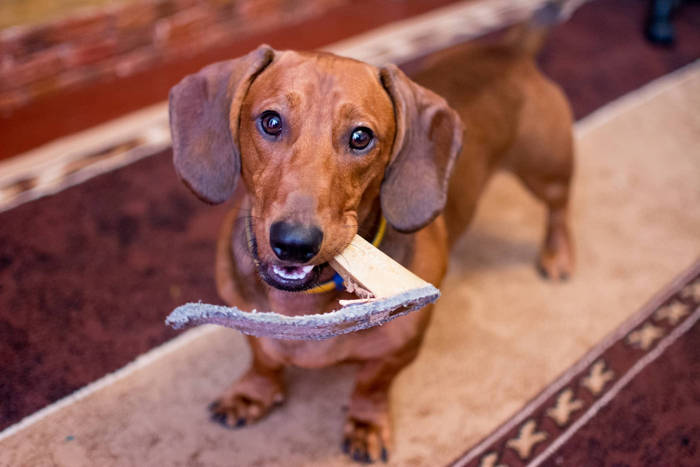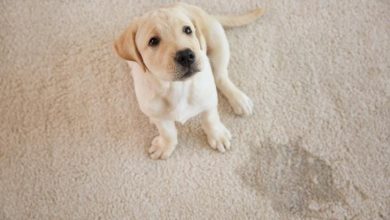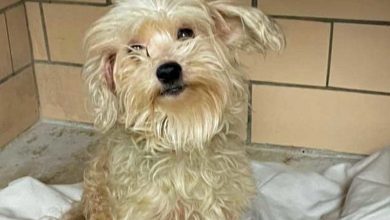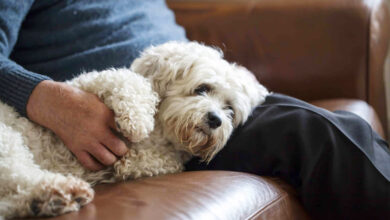How to Discipline a Dog For Chewing

Dogs interact with the world through their mouths. Chewing is as natural for a dog as holding something in our hands is for us. However, when a dog begins chewing on inappropriate objects or with extra aggression, then chewing can become a problem. Inappropriate and excessive chewing can be a destructive and harmful habit. One that needs to be controlled as quickly as possible. Otherwise, your dog may end up biting someone or hurting its jaws. Today, we’re going to take a look at how to discipline a dog for chewing. Our goal will be to curb this bad behavior.
Now, you cannot expect a dog to stop putting things in its mouth at all. A dog that doesn’t interact with the world around it isn’t a healthy dog. The best way to make sure that your dog doesn’t get into destructive chewing is to take preventive steps. Start training your dog from an early age to discourage excessive chewing.
More...
What’s The Best Time to Begin Preventive Chewing Training?

Dogs begin exploring the power of their jaws when they begin teething. Pups from different breeds teeth at different times. When a dog begins to teeth, their gums swell and cause them a bit of discomfort. This discomfort is what makes them want to chew on things. Chewing is healthy for a dog during its teething phase. It provides them with relief and also ensures that their teeth grow out properly. However, some pups end up making a habit out of chewing. Once this happens, they’re likely to develop a habit of chewing everything.
Preventive chewing training should begin as soon as your dog begins to teeth. Preventive chewing training is quite simple; all you have to do is give your dog attention. Keep an eye on them and whenever they chew on something inappropriate, scold them. The worst mistake that many pet owners make is that they ignore bad behavior. Ignoring bad behavior ends up reinforcing it. You need to tell your dog that what they’re doing is bad and that it upsets you. If you can drill this into your pup from an early age, then they won’t adopt any destructive chewing habits.
Unfortunately, not all dogs are made equal. Some pups will be discouraged from destructive chewing easily. However, some pups are more stubborn and will need to be discouraged in other ways.
Teething isn’t the only reason why dogs chew excessively. Some dogs become destructive chewers when they’re bored or when they’re feeling restless. Dogs with separation anxiety can be especially destructive. Knowing why your dog is chewing a lot can make it much easier for you to fix the problem.
Let’s break down the Preventive Chewing Training process into a handful of steps. This will make preventive action much easier.
How to Discipline a Dog For Chewing
Step 1
Begin by identifying the cause of their behavior. If you’re dealing with a pup, then inspect their mouth to see whether they’ve begun teething or not. If you have an adult dog, then they may be chewing because of:
- Boredom; a bored dog that doesn’t get enough mental and physical stimulation will look for ways to vent out. Chewing could be a coping mechanism through which they’re letting out extra steam.
- Separation Anxiety; if your dog has a history of being anxious or easily stressed then this might be a problem. Separation anxiety can be a nuisance to deal with. It can make a dog unruly and quite hard to deal with. Fixing anxiety is another story entirely.
- Medical Problems; sometimes a medical problem could be causing discomfort for your dog. This discomfort can lead them to become destructive chewers. Stomach related problems such as indigestion, nausea, and worms often make a dog chew. If your dog’s chewing habits seem to have no apparent trigger, then you should take them to a vet for a checkup.
Once you’ve identified the cause, you can begin working on ways to fix the problem.
Step 2
Puppy-proof your house by keeping hazardous items out of reach. Look around your house for toxic liquids (cleaning solutions etc.), electric wires, and soft items. You can tape hard plastic sheets to the edges of your sofas to prevent your dog from ripping them. There are two purposes of puppy proofing your home. The first being that you get rid of safety hazards for your dog. The second being that you don’t give your dog anything to chew on. Once they don’t have a lot of options left to them, you can move onto the next step.
Step 3
Chewing is natural and also healthy for your dog. Therefore, you should encourage your dog to chew, as long as they’re chewing on the right objects. Appropriate chewing should be encouraged by providing your dog with toys. There are a ton of dog toys available in the market. Some are made specifically for chewing. You can check out some awesome chew toys that we’ve covered previously.
Picking a chew toy for your dog isn’t trickier than you might think. You need to get a toy that doesn’t include any choking hazards. A toy that’s made using safe materials and isn’t hard enough to damage your dog’s teeth. At the same time, it shouldn’t be too soft to be destroyed by your dog.
Giving your dog a couple of toys that they like will improve their chewing behavior. This is also a great way to deal with a dog that’s bored.
Step 4
There are a number of ways to discourage your dog from inappropriate chewing. Puppy proofing your home and getting them toys that they like are two great options. You can also discourage your dog by showing them that you don’t like their behavior. Take away items that they bite on too hard. You can also spray bitter apple cider on household objects. The strong taste of the cider acts as an effective deterrent.
Negative reinforcement also works. Scold your dog and don’t give them their favorite treat for a day if they continue being destructive chewers.
Teaching your dog about the strength of their jaw is important. Pups often don’t realize that their bites pack a lot of force. This can lead to your dog biting you without meaning any harm. The best way to teach your dog to have a soft mouth is to train them to never use too much force when they grab you. If your pup ever grabs you with more force than necessary, then act as they hurt you. An exaggerated ‘ouch!’ can communicate your feeling of pain quite well. This, accompanied by you leaving the room will teach your dog that they should be careful when they grab you.
Step 5
Dogs are very energetic animals. You need to make sure that there isn’t any extra energy building up inside of them that makes them restless. Increase the amount of play time with your dog. Take them out on a walk or run with you. Play with them whenever you bring out their toys. Keeping your dog mentally and physically occupied is a great way to ensure that they don’t adopt bad habits
If you follow all of these steps, then you’ll be able to discipline your dog’s chewing habits quite well. Remember, as a pet parent you have to teach your dog what’s right and what’s wrong. You should always train your dog from an early age since they are much easier to train at that time. Once a bad habit manifests and takes root, it’s much harder to get rid of.
With enough patience and care, you can bring your dog’s jaws under control in no time.




